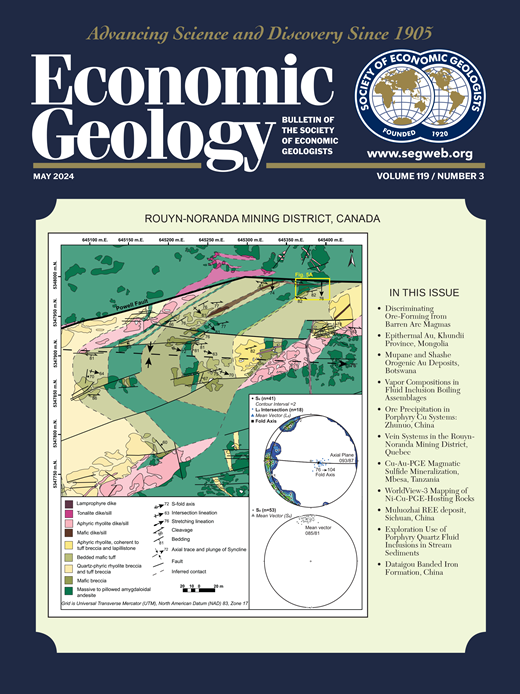Genesis and Resource of Lithium Brines in the Qaidam Basin of North Qinghai-Xizang Plateau: An Overview
IF 4.9
1区 地球科学
Q1 GEOCHEMISTRY & GEOPHYSICS
引用次数: 0
Abstract
The Qinghai-Xizang Plateau is globally acknowledged as the second-largest concentration area of lithium brine deposits, with the Qaidam basin standing out as the largest endorheic basin in this region, boasting numerous salt lakes and abundant lithium brine resources. Lithium brine deposits within the Qaidam basin are predominantly categorized into modern salt lake brines and deep brines. The former are the principal raw materials for the production of lithium salt products in China, whereas the latter are considered vital lithium reserve resources. The origin of lithium in modern salt lake brines is intricately linked to lithium-rich hot springs surfacing from deep, extensive fault zones surrounding the basin. The distribution of lithium-rich salt lakes is mainly governed by the evolution of ancient lake basins, induced by the Neotectonic activities. The formation of deep lithium-rich brines is subject to multiple factors, with water-rock interactions playing a crucial role. An important scientific endeavor for future studies on modern salt lakes in the Qaidam basin and the whole Qinghai-Xizang Plateau region involves a thorough analysis of the geochemical behavior of lithium throughout its migration and enrichment processes to clarify the genetic connections between hard-rock lithium mines and lithium-rich salt lakes.青藏高原北部柴达木盆地锂卤水成因及资源综述
青藏高原是全球公认的第二大卤水锂矿集中区,其中柴达木盆地是该地区最大的内陆盆地,盐湖众多,卤水锂矿资源丰富。柴达木盆地内的锂卤水矿床主要分为现代盐湖卤水和深层卤水。前者是中国生产锂盐产品的主要原料,后者被认为是重要的锂储备资源。现代盐湖盐水中锂的起源与盆地周围深而广泛的断裂带中出现的富含锂的温泉有着复杂的联系。富锂盐湖的分布主要受新构造活动诱发的古湖盆演化的支配。深层富锂盐水的形成受多种因素影响,其中水岩相互作用起着至关重要的作用。深入分析锂在整个迁移富集过程中的地球化学行为,阐明硬岩锂矿与富锂盐湖的成因联系,是柴达木盆地乃至整个青藏高原地区现代盐湖研究的重要科学方向。
本文章由计算机程序翻译,如有差异,请以英文原文为准。
求助全文
约1分钟内获得全文
求助全文
来源期刊

Economic Geology
地学-地球化学与地球物理
CiteScore
10.00
自引率
6.90%
发文量
120
审稿时长
6 months
期刊介绍:
The journal, now published semi-quarterly, was first published in 1905 by the Economic Geology Publishing Company (PUBCO), a not-for-profit company established for the purpose of publishing a periodical devoted to economic geology. On the founding of SEG in 1920, a cooperative arrangement between PUBCO and SEG made the journal the official organ of the Society, and PUBCO agreed to carry the Society''s name on the front cover under the heading "Bulletin of the Society of Economic Geologists". PUBCO and SEG continued to operate as cooperating but separate entities until 2001, when the Board of Directors of PUBCO and the Council of SEG, by unanimous consent, approved a formal agreement of merger. The former activities of the PUBCO Board of Directors are now carried out by a Publications Board, a new self-governing unit within SEG.
 求助内容:
求助内容: 应助结果提醒方式:
应助结果提醒方式:


